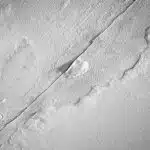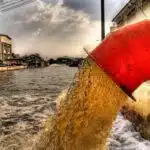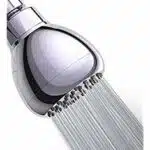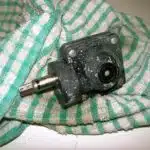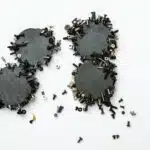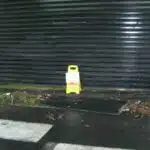Water damage is a serious and costly problem that can affect any homeowner. The damage caused by water can be extensive and can result in the loss of personal property, as well as structural damage to your home. Fortunately, there are steps you can take to prevent water damage from occurring in your home.
Preventing water damage requires a proactive approach to maintenance and home improvement. By taking the time to identify potential sources of water damage in your home, and addressing them before they become a problem, you can save yourself a great deal of time, money, and frustration in the long run. In this article, we will provide you with practical tips and strategies for preventing water damage in your home so that you can protect your investment and enjoy peace of mind knowing that your home is safe from harm.
Understanding The Risks Of Water Damage
Water damage can cause significant harm to your home, and it’s essential to understand the risks associated with it. Homeowners must take preventive measures to avoid water damage as much as possible. Having a clear understanding of common causes and insurance coverage can help reduce the likelihood of experiencing extensive losses.
The most common causes of water damage include burst pipes, leaky roofs, appliance malfunctions, clogged gutters, and cracked foundations. Unfortunately, homeowners often overlook these issues until they become severe. It’s crucial to conduct regular inspections and address any problems immediately before they escalate into costly damages.
Understanding insurance policies related to water damage is also critical. Most standard homeowner’s insurance policies do not cover flood-related damages caused by external factors such as natural disasters or heavy rainfall. Instead, homeowners need to purchase separate flood insurance policies for such incidents. It’s crucial to review insurance policy coverage regularly and ensure that it covers potential risks that may lead to water damage in your area.
Regular maintenance and timely repairs are essential in preventing water damage in your home. The next section outlines how you can conduct regular inspections and identify potential risks before they cause significant harm. By taking preventive measures and understanding risks related to water damages, you can save yourself from expensive repairs and protect your investment for many years to come.
Conducting Regular Inspections Of Your Home
One of the best ways to prevent water damage to your home is by conducting regular inspections. By doing so, you can identify any potential issues before they become major problems. Common issues that homeowners face include leaky roofs, cracked foundations, and clogged gutters. These issues can lead to water damage if not addressed promptly.
Prevention tips for these common issues include keeping your gutters clean and free from debris, ensuring your roof is in good condition and free from leaks, and inspecting your foundation for cracks or signs of wear. You should also make sure that any trees or shrubs near your home are trimmed back to prevent them from damaging your roof or walls.
Regular inspections will help you catch any potential problems before they become major issues. By taking the time to inspect your home on a regular basis, you can save yourself a lot of time and money in the long run. In the next section, we will discuss how to check for leaks in your plumbing system.
Checking For Leaks In Your Plumbing System
Leaks in your plumbing system can cause severe water damage to your home. It is important to be aware of the signs of a plumbing leak, as well as the main causes, in order to prevent such damage. Common signs of a plumbing leak include a musty smell, damp patches, and an unusually high water bill. The main causes of plumbing leaks include corroded pipes, faulty seals, and damaged fixtures.
Signs Of Leaks
Identifying the signs of leaks is crucial in preventing water damage to your home. Leaks can occur in various parts of your plumbing system, such as pipes, faucets, and toilets. One of the most obvious signs of a leak is the sound of running water when all fixtures are turned off. This may indicate that there is a hidden leak somewhere in your home’s plumbing system. Another sign to look out for is stains on walls or ceilings, which may indicate that water is seeping through the drywall due to a hidden leak.
Repairing leaks promptly can help prevent significant water damage to your home. If you notice any signs of a leak, it’s important to investigate and fix it as soon as possible. A small leak can quickly turn into a major problem if left unchecked. It’s also essential to regularly inspect your plumbing system for any signs of wear and tear or damage that could lead to leaks.
In conclusion, identifying and repairing leaks in your plumbing system is vital in preventing water damage to your home. Taking proactive steps to maintain your plumbing system can save you from costly repairs down the road. By being vigilant about checking for leaks and promptly addressing them when they occur, you can ensure that your home stays dry and safe from water damage.
Main Causes Of Leaks
Checking for leaks in your plumbing system is crucial in preventing significant water damage to your home. In the previous subtopic, we discussed the common signs of leaks, which include the sound of running water when all fixtures are turned off and stains on walls or ceilings. While identifying these signs is important, it’s equally important to understand the main causes of leaks so that you can take proactive steps to prevent them from occurring.
The main causes of leaks in plumbing systems are worn-out fittings, damaged pipes, and faulty appliances. Worn-out fittings occur when the seals around faucets or valves become loose or corroded over time. Damaged pipes can result from a variety of factors such as freezing temperatures, tree roots growing into pipes, or physical damage caused by construction work. Faulty appliances such as washing machines and dishwashers can also cause leaks due to worn-out hoses or defective parts.
Fortunately, there are several repair solutions available for fixing leaks in your plumbing system. For small leaks caused by worn-out fittings or damaged pipes, a simple fix may be tightening loose connections or replacing damaged parts. However, more extensive repairs may be necessary for larger leaks caused by faulty appliances or severely damaged pipes. Regular maintenance and inspections of your plumbing system can help identify potential issues early on and prevent costly repairs down the road. By understanding the main causes of leaks and taking proactive steps to address them promptly, you can ensure that your home remains protected from water damage.
Addressing Issues With Your Roof And Gutters
Moving on from checking for leaks in your plumbing system, it is important to address issues with your roof and gutters to prevent water damage to your home. As we all know, a roof serves as the first line of defense against natural elements like rain, snow, and hail. Over time, it may develop cracks or holes that can lead to water infiltration. Therefore, regular roof repair is necessary to ensure that it remains sturdy and weather-resistant.
Moreover, gutters play a crucial role in directing rainwater away from your home’s foundation. When they become clogged with leaves, twigs, or debris, they can no longer perform their function properly. This can result in water pooling around the base of your home or seeping into its structure. Hence, gutter cleaning should be done at least twice a year to keep them free from any obstructions.
To sum up, addressing issues with your roof and gutters is essential in preventing water damage to your home. Regular roof repair ensures that your roof stays strong and resilient against natural elements while clean gutters allow rainwater to flow freely away from your home’s foundation. In the next section, we will discuss installing proper drainage systems as another effective way of mitigating water damage risks.
Installing Proper Drainage Systems
To prevent water damage to your home, it is essential to install proper drainage systems. Different drainage types can be implemented depending on the landscape and topography of your property. The most commonly used types are surface, subsurface, and slope drainage systems.
Surface drainage systems are designed to collect and divert water from the surface of your property. These systems include gutters, downspouts, and French drains. Proper installation techniques for these systems involve ensuring that gutters are free from debris and sloped correctly to allow for water flow towards the downspouts.
Subsurface drainage systems are installed below the ground surface to collect and direct water away from the foundation of your home. This type of system includes perimeter drains and sump pumps. When installing a subsurface drainage system, it is crucial to ensure that the slope is adequate to facilitate proper water flow away from your home’s foundation.
Slope drainage systems are typically used in properties with a steep slope or hillside. These systems involve grading and contouring of the landscape to direct water flow away from your property. Proper installation techniques for this type of system require accurate measurement and calculation of slope angles.
Installing proper drainage systems is critical in preventing water damage to your home. By understanding different drainage types and implementing proper installation techniques, you can protect your property from costly repairs due to water damage. In the next section, we will discuss how maintaining appliances and HVAC systems can also contribute to preventing water damage in your home.
Maintaining Your Appliances And Hvac Systems
Have you ever heard the story of the neglected washing machine? It’s a tale as old as time – a homeowner purchases a brand new appliance, uses it frequently, and then forgets about it. The once shiny and efficient machine becomes dirty and outdated, leading to costly repairs or even complete replacement. Don’t let this happen to you! Regular appliance maintenance is essential for preventing water damage in your home.
One of the most important appliances to maintain is your HVAC system. This includes your furnace, air conditioner, and any ductwork in your home. Proper HVAC maintenance not only prevents water damage but also improves energy efficiency and indoor air quality. Schedule yearly inspections with a licensed technician to clean and inspect all components of your HVAC system. Be sure to replace filters regularly and keep an eye out for any leaks or unusual noises.
In addition to HVAC maintenance, it’s crucial to keep all other appliances in good working order. This includes your washing machine, dishwasher, refrigerator, and any other water-using appliances in your home. Regularly inspect hoses for cracks or leaks and replace them as needed. Clean lint traps in dryers after each use to prevent buildup that can cause fires or restrict airflow. By taking these simple steps, you can ensure that your appliances are functioning properly and minimize the risk of water damage occurring in your home.
As important as maintaining appliances may be, there are additional steps you can take to protect against water damage. In the next section, we’ll discuss insulating pipes and why this is critical for preventing frozen pipes – a common cause of residential flooding during colder months.
Insulating Your Pipes
Now that we have discussed how to maintain your appliances and HVAC systems, let’s move on to insulating your pipes as another important step in preventing water damage to your home. Pipes that are not properly insulated can freeze and burst during colder months, causing serious water damage. Insulation is a simple solution that can save you from costly repairs and increase energy efficiency in your home.
There are different types of insulation available for pipes, including foam, fiberglass, and reflective foil. DIY installation kits can be found at most hardware stores, but it’s important to make sure the insulation is installed correctly to ensure maximum effectiveness. Professional installation may be necessary in some cases, especially if the pipes are hard to reach or if there are any leaks or damage present.
The benefits of insulating pipes extend beyond just preventing water damage. Proper insulation can also lead to increased energy efficiency by reducing heat loss from hot water pipes. This means less energy is required to keep the water hot, resulting in lower utility bills. Additionally, insulating cold-water pipes can prevent condensation from forming on them, which can reduce moisture buildup in your home.
- Foam insulation is easy to install and comes in pre-cut sizes for different pipe diameters.
- Fiberglass insulation is a cost-effective option that provides good thermal protection.
- Reflective foil insulation is ideal for outdoor pipes as it reflects sunlight and reduces heat absorption.
- Check for any gaps or cracks in the existing insulation before installing new insulation.
- Consider using pipe sleeves for added protection against freezing temperatures.
Insulating your pipes is an important step in preventing water damage and increasing energy efficiency in your home. By choosing the right type of insulation and ensuring proper installation, you can avoid costly repairs and save money on utilities. In the next section, we will discuss monitoring your water bill for unusual increases as another way to prevent water damage and promote efficient use of resources.
Monitoring Your Water Bill For Unusual Increases
Water bill analysis is a crucial step in preventing water damage to your home. By regularly reviewing your water bill, you can identify any unusual increases that may indicate a leak or other problem. It’s important to keep in mind that some leaks can be small and go unnoticed for months, resulting in significant damage and expensive repairs.
To analyze your water bill, start by examining your usage patterns over the last few months. Look for any sudden spikes or dips that don’t align with normal usage trends. If you notice a significant increase in consumption despite not changing your habits, it may be time to investigate further. Additionally, compare your current bill with previous ones to see if there has been a gradual increase in usage over time.
Identifying leaks is another critical step in protecting your home from water damage. Some common signs of leaks include damp spots on walls or ceilings, mold growth, and musty smells. You can also conduct a simple test by turning off all faucets and appliances that use water and checking if the meter is still running. If it is, this indicates an active leak that needs to be addressed as soon as possible.
By analyzing your water bill and identifying leaks early on, you can take proactive steps to prevent water damage to your home. However, even with these precautions, accidents can still happen. In the next section, we’ll discuss using water alarms for early detection of potential problems before they become major issues.
Using Water Alarms For Early Detection
As a homeowner, it is crucial to protect your home from water damage. While keeping an eye on your water bill can help detect leaks, it is not always enough. Fortunately, there are additional measures you can take to prevent water damage. One of these is using water alarms for early detection.
The benefits of using water alarms are numerous. Firstly, they alert you as soon as the alarm detects any moisture or flooding in your home, giving you ample time to address the issue before it becomes a major problem. Secondly, they can be installed in various areas where leaks are most likely to occur, such as under sinks and near appliances like washing machines and dishwashers. Additionally, some types of water alarms also come with smartphone integration which allows you to receive alerts even when you’re away from home.
There are several types of water alarms available in the market that cater to different needs and budgets. Some popular options include sensor-based alarms that detect moisture levels and sound an alarm if they exceed a certain threshold; wifi-enabled alarms that send notifications via smartphone apps; and whole-house systems that monitor all areas for potential leaks. Regardless of which type you choose, installing one or more water alarms in your home is an effective way to prevent costly water damage caused by leaks and floods.
To further protect your home from hazards, it is important to properly store and dispose of hazardous materials such as paint, cleaning chemicals, batteries, pesticides and more. These materials should never be poured down drains or flushed down toilets as they can harm the environment and potentially contaminate groundwater sources. Instead, consider taking them to community collection events or hazardous waste disposal centers for safe disposal. By implementing these practices alongside using water alarms in your home, you can ensure maximum protection against potential hazards while maintaining a safe living environment for yourself and those around you.
Properly Storing And Disposing Of Hazardous Materials
Proper storage of hazardous materials is essential to prevent water damage and other risks to your home. It is important to store all hazardous materials in their original containers, with clear labeling indicating what they are and how they should be handled. If you need to transfer a hazardous material to a new container, make sure it is labeled correctly and that the container is properly sealed.
Disposing of hazardous waste safely is also crucial. Never pour any hazardous material down the drain or into any other type of household plumbing system. This can lead to clogs and blockages that can cause serious damage to your home’s pipes and plumbing fixtures. Instead, take any hazardous waste to a designated disposal center or contact your local waste management company for guidance on how to dispose of it safely.
In addition, be mindful of proper ventilation when storing or disposing of hazardous materials. Certain chemicals can emit harmful fumes that can pose health risks if inhaled for extended periods. Always store these materials in a well-ventilated area, and wear appropriate protective gear such as gloves and masks when handling them. By taking these precautions, you can protect your home from water damage while also keeping yourself safe from potentially harmful substances.
As you continue on your journey towards protecting your home from water damage, being mindful of landscaping and irrigation practices will be the next step. By properly managing the outdoor areas surrounding your home, you can help prevent excess moisture buildup that could seep into your home’s foundation over time.
Being Mindful Of Landscaping And Irrigation
Properly storing and disposing of hazardous materials is an essential step in preventing water damage to your home. However, it’s not the only step you can take. Being mindful of landscaping and irrigation can also help keep your home safe from water damage. Water conservation is a vital part of eco-friendly landscaping, which can ultimately protect your home.
One way to practice water conservation is by using plants native to your area in your landscaping. These plants are adapted to the climate and require less water than non-native plants. Another way to conserve water is by using mulch around plants. Mulch helps retain moisture in the soil, reducing the amount of water needed for irrigation.
In addition to conserving water, proper irrigation techniques are crucial to protecting your home from water damage. Overwatering can lead to soil erosion and saturation, which can ultimately lead to foundation damage and flooding. By practicing eco-friendly landscaping techniques such as water conservation and proper irrigation, you’re taking steps towards keeping your home safe from potential water damage caused by severe weather events.
Transition: While being mindful of landscaping and irrigation is an important step in preventing water damage, it’s also essential to plan for severe weather events that could potentially cause significant harm to your home.
Planning For Severe Weather Events
When it comes to protecting your home from severe weather events, preparation is key. While we can’t control the weather, we can take measures to minimize the damage that it causes. One of the most important steps you can take is creating an emergency kit and evacuation plan. This will help ensure that you and your family are prepared in case of an emergency.
Here are some items to include in your emergency kit:
- Non-perishable food items
- Bottled water
- Flashlights with extra batteries
- First aid kit
- Blankets
In addition to having an emergency kit, it’s essential to have an evacuation plan in place. This includes identifying a safe location for you and your family to go in case you need to leave your home quickly. Make sure everyone knows the plan and what they need to do in case of an emergency.
By taking these steps, you can be better prepared for severe weather events and minimize the damage they cause. In the next section, we’ll discuss another critical step: knowing how to shut off your home’s water supply.
Knowing How To Shut Off Your Home’s Water Supply
One of the most important aspects of preventing water damage to your home is knowing how to shut off your home’s water supply. Emergencies can happen at any time, and shutting off the main valve can prevent significant damage from occurring. The main water valve is typically located where the water line enters your home, either outside or in a basement/crawl space.
Labeling and locating the main valve is crucial for easy access during an emergency situation. It’s essential to make sure that everyone in your household knows where the main valve is located and how to turn it off. Additionally, you should label the main valve clearly so that anyone who needs to use it can find it easily. By doing so, even if you’re not at home when an emergency happens, someone else can take care of it quickly.
While turning off your home’s water supply might seem like a task anyone can do, sometimes you may need professional help. In some cases, valves may be hard to reach or require special tools to turn them off properly. If you’re unsure about how to turn off your main valve or if you encounter any issues when trying to do so, don’t hesitate to hire a professional plumber for assistance. Doing so will give you peace of mind that everything has been done correctly and reduce the risk of potential damage occurring due to improper handling.
Seeking professional help when necessary is crucial in maintaining a safe and functional home environment. In addition, having regular maintenance checks by professionals will help identify potential problems before they become emergencies. When it comes to protecting your home from water damage, taking preventative measures such as knowing how and when to shut off your home’s water supply can go a long way in ensuring your investment remains secure for years to come.
Seeking Professional Help When Necessary
When to hire a professional is an important consideration in preventing water damage to your home. While DIY solutions are often effective, there are certain situations where it’s best to seek professional help. If you’re dealing with a significant amount of water damage or if the source of the problem is difficult to identify, it’s time to call in the experts. They can provide an accurate assessment of the situation and recommend appropriate solutions.
Another reason to consider hiring professionals is when dealing with mold growth. Mold thrives in damp conditions and can cause serious health problems for you and your family. If you suspect that there’s mold in your home, don’t try to remove it yourself. Instead, hire a professional who has experience dealing with mold remediation.
Ultimately, when deciding whether or not to hire a professional, it’s important to weigh the costs and benefits. While DIY solutions may be cheaper upfront, they may end up costing more in the long run if not done correctly. Hiring a professional can give you peace of mind knowing that the job will be done right and that your home will be protected from further damage.
Now that we’ve discussed seeking professional help when necessary, let’s move on to creating a water damage prevention plan for your home. By implementing preventative measures, you can reduce the risk of water damage occurring and avoid costly repairs down the line.
Creating A Water Damage Prevention Plan For Your Home
Water damage can be a costly and devastating experience for any homeowner. The good news is that with the right prevention plan, you can minimize the risk of water damage to your home. One important step in creating a prevention plan is to create a budget that accounts for regular maintenance and repairs. By setting aside funds each year, you can ensure that your home’s plumbing and drainage systems are well-maintained and functioning properly.
Another important aspect of preventing water damage is choosing the right insurance policy. A comprehensive homeowner’s insurance policy should cover water damage caused by burst pipes, leaky roofs, and other common issues. It’s essential to review your policy regularly to ensure that it covers all potential sources of water damage. Additionally, consider adding flood insurance if you live in an area prone to flooding.
Aside from budgeting and insurance, there are several other steps you can take to prevent water damage. Regularly inspecting your plumbing systems, fixing leaks promptly, and ensuring proper drainage around your home are all simple yet effective measures in preventing water damage. By taking these steps and being proactive in protecting your home from water damage, you’ll enjoy peace of mind knowing that your investment is safe.
Conclusion
Water damage can have a devastating impact on your home and your finances. As a homeowner, it’s important to be proactive in preventing water damage before it occurs. Regular inspections of your plumbing system, roof, and gutters are essential in identifying potential issues that can lead to water damage. Installing proper drainage systems and planning for severe weather events can also help prevent water damage.
It’s crucial to know how to shut off your home’s water supply in case of an emergency. Seeking professional help when necessary can also prevent further damage to your home. By creating a comprehensive water damage prevention plan for your home, you can be prepared for any situation that may arise.
As the saying goes, “An ounce of prevention is worth a pound of cure.” This rings true when it comes to preventing water damage in your home. Taking proactive measures such as conducting regular inspections and installing proper drainage systems may seem like minor steps, but they can make a world of difference in the long run. Just like maintaining the structural integrity of your home takes time and effort, so does protecting it from water damage. By investing time into preventive measures now, you’ll save yourself from costly repairs and headaches down the line.
Image Credits
- “Closed due to water damage – Holmesglen BWS” by avlxyz (featured)

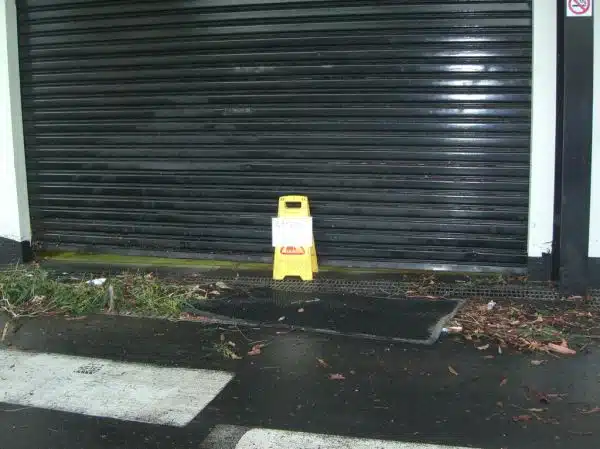
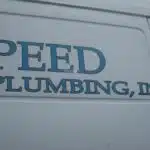




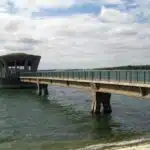


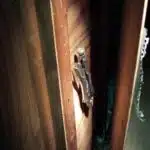

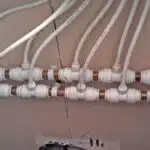
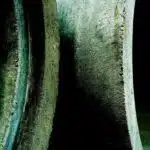

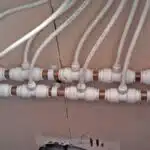


![How To Get Hair Out Of A Bathtub Drain 18 2/365 [Bathtub Drain]](https://green-life.blog/wp-content/uploads/2023/05/cOEu5edpkejq-150x150.jpg.webp)
